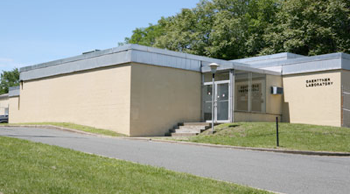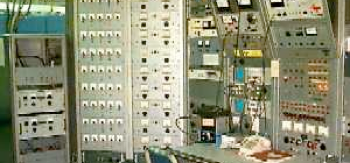
Located at the east-side boundary of the Troy campus on the Tibbits Avenue, the Gaerttner Linear Accelerator (LINAC) Facility began its construction in 1958 with funding from the Atomic Energy Commission and the facility became operational in December 1961. As a major nuclear research and educational tool of the newly established nuclear program faculty at that time, the layout of the facility was designed to produce electrons, x-ray photons, and neutrons, thus serving a large number of research applications involving nuclear engineering, nuclear physics, radiation effects in electronics, nondestructive testing, radiation processing of materials, computed tomography, and other industrial processes. At the core of the LINAC is a multi-million dollar, high power, 100 MeV, L-band traveling wave, electron linear accelerator which is capable of producing intense pulsed electron beams in excess of 20 kw average power, and to this day is one of the most powerful accelerators in its class. Through photo-nuclear interactions, the accelerator can produce ~4x1013 neutrons/second with neutron energies ranging from sub thermal to 60 MeV. The facility is equipped with several neutron production targets, a Lead Slowing-Down Spectrometer and several specialized neutron and gamma detection systems.

The initial AEC-sponsored research, up to 1974, was focused on low-energy neutron interactions of interest to thermal reactors; this was gradually expanded into neutron interactions, up to several MeV, of interest to the fast reactor program. In addition to AEC and subsequent USERDA and USDOE program support, research has been sponsored by the NSF, NASA, US Department of Transportation, and many industrial sponsors. While the core application of the LINAC remains as “nuclear data” in support of future safe reactor designs, the principal intellectual challenges it can pursue come from broad applications of “applied radiation technologies”. Current areas of research at the LINAC include reactor physics, photo-neutron reactions, assay of used nuclear fuel, neutron cross sections, radiation effects on electronics, and production of medical isotopes. This laboratory has well served government and industry in numerous applications where it has provided a unique and highly intense radiation environment. Visitors from the U.S. (for example, MIT, ORNL, Sandia, Idaho, GE, Lockheed Martin, and others) have carried out experiments at the facility, as well as many international researchers.
In September 1997, the LINAC was designated as a Nuclear Historic Landmark by the American Nuclear Society:
“This was one of the first laboratories, utilizing a high-power electron linear accelerator that generated accurate nuclear data for the design of safe and efficient nuclear power reactors.”

To date, LINAC related research has resulted in over 260 archival journal publications and was used by more than 170 graduate students as part of their PhD thesis research. Over the years, the LINAC has also played an essential role in undergraduate education, offering hands-on experience to a large number of undergraduate students through coursework and design projects. The facility regularly offers tours to local schools. The faculty believes that the LINAC has the potential to further broaden its use, by expanding into emerging fields. Such new initiatives will require an intensive interdisciplinary approach and more human resources, involving not only collaborators in materials and biology on campus, but also institutional partners in the Capital Region, New York State, and beyond. The Director of the LINAC is Yaron Danon, Professor of Nuclear Engineering. Currently, 5 full-time staff members, plus a team of scientists from other institutions and a number of undergraduate and graduate students, work at the facility on a daily basis.